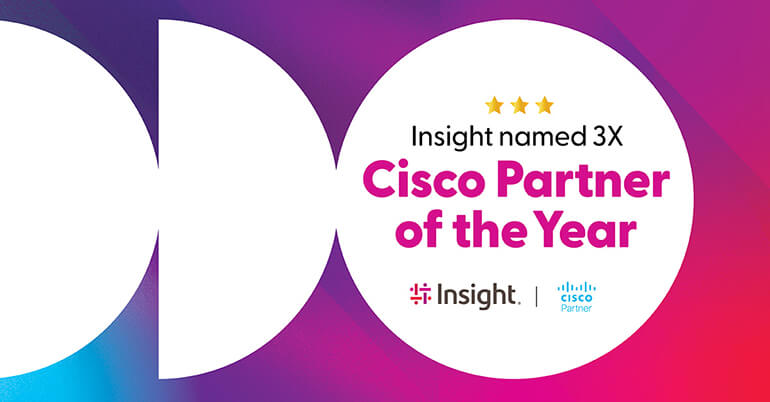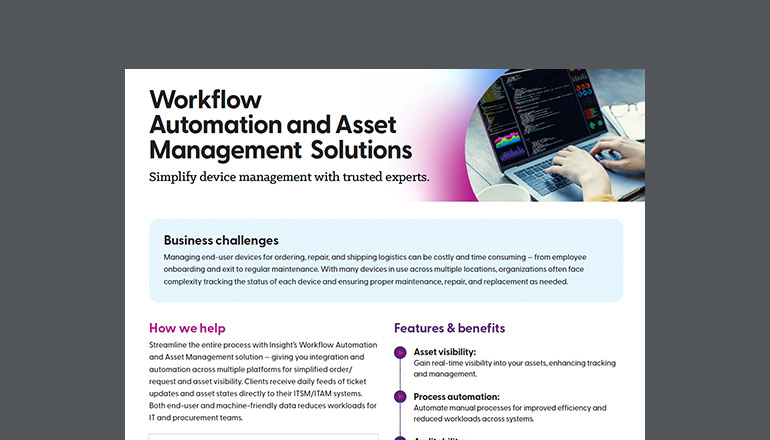Article Traditional VS Modular IT Infrastructure
By Insight Editor / 17 Oct 2017
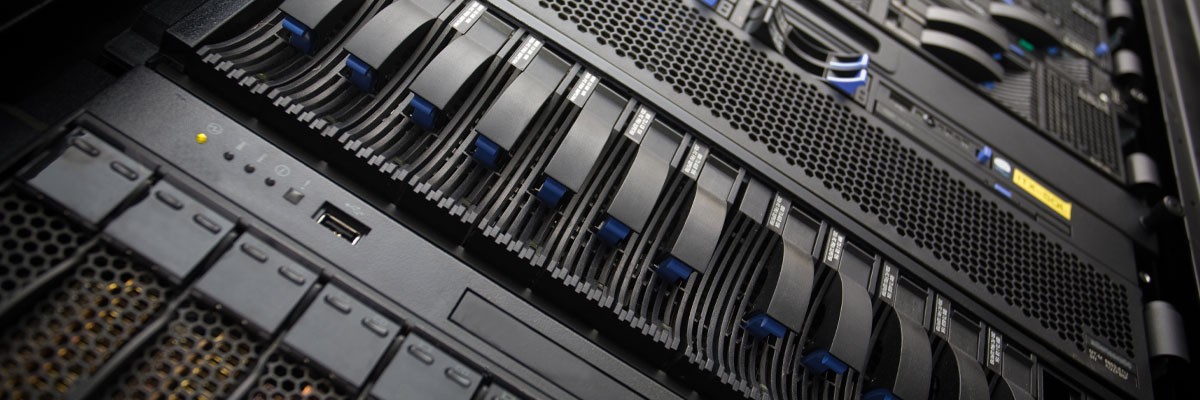
With the continuing increased reliance on technology, every business is, in part, becoming an IT company. As part of this shift, businesses need to evolve their IT infrastructure to enable key functions. Big, technology-focused organizations have expensive solutions that don’t work for branches and small businesses.
That poses the question: What form of IT infrastructure works best for these businesses?
Traditional data servers have been used for years, but do they work well for these organizations?
How about modular solutions?
Traditional Data Servers
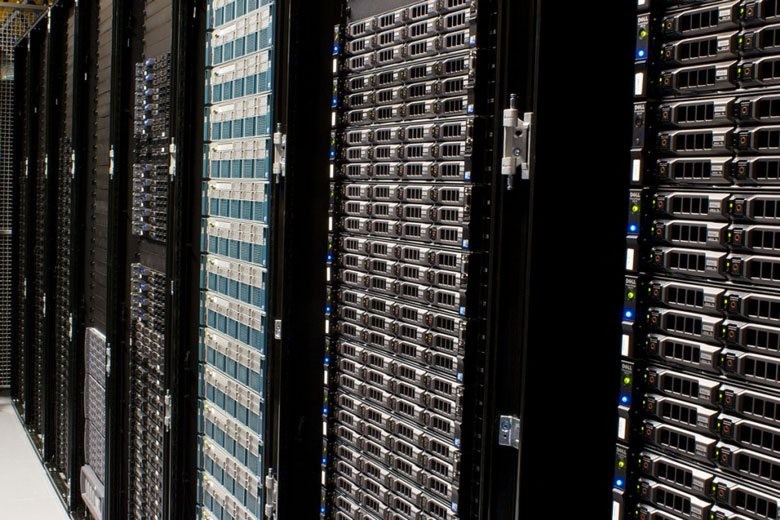
Traditional data servers are big, hulking pieces of hardware that get the job done. However, you need significant software and physical solutions to allow them to work. Not only that, but these traditional data systems require adjustments to your facility, as they don’t run off normal voltage. Furthermore, these systems are loud and expensive to run. You need significantly more space and power to operate traditional data servers, so they’re not a good fit for regional branches or small businesses.
These data towers are designed to work well for big IT corporations with huge data needs, not for smaller businesses, or large businesses with many locations. For these corporate giants, data towers are the best choice simply because their facilities are purpose-built to accommodate their needs.
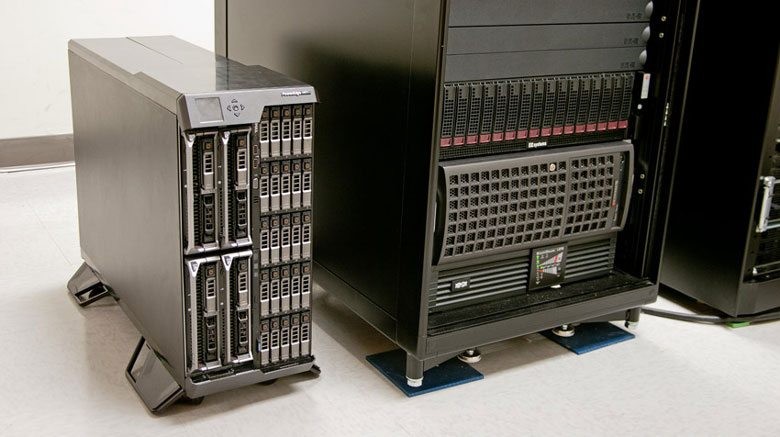
What Is Modular Infrastructure?
Modular infrastructure, similar to converged infrastructure is an increasingly popular hardware solution purpose-built to remove the limitations imposed by more traditional IT storage and computing solutions. For example, one of the biggest weaknesses of traditional infrastructure is that it requires a lot of energy to use, even if you don’t need it at full capacity. Traditional servers use almost half of the peak energy even when idle. This results in high ongoing utility costs. On the other hand, modular infrastructure is 95% efficient and you only need to use exactly as many computing resources as you actually use.
In order to minimize issues with product compatibility and reduce management-based complexity, converged solutions merge computation, networking, data storage, systems administration, and relevant software together into a predesigned package that acts and is controlled as a single unit that delivers more value.
What Benefits Does Modular Infrastructure Provide?
Modular infrastructure provides small businesses, franchises, and branches of larger organizations with an amazing amount of utility. Many of these businesses need IT systems to work properly with established software and processes. The following is a sample of some of the benefits that converged infrastructure can provide to these businesses.
Quick Deployment
It’s incredibly quick and simple to install a converged infrastructure solution, from ordering to completion of deployment. Since it’s a standardized solution it is ordered, assembled, and delivered in a matter of weeks. Because it’s an all-in-one solution, modular IT infrastructure systems require a minimum of fuss to install, so you can get going with it right away.
Easy to Scale
Because modular IT infrastructure solutions have a compressed, repeatable, and standardized design, it’s simple to scale as you need only add additional nodes as your needs evolve.
Another element of modular IT infrastructure that makes it so friendly to scaling is that it’s trivial to replace older obsolete hardware with newer technologies if you find you need more power. As a result, you don’t need to worry about rolling out a company-wide purchase of entirely new data server solutions.
Highly Agile
Businesses change. As a result, it’s critical that your technology solutions are flexible enough to allow for shifts. Because modular IT infrastructure solutions are able to be replaced or added to on a piece by piece basis, you can easily add necessary functionality that changes mandate. With modular IT infrastructure, you have an incredible amount of flexibility to adjust your technology to meet new requirements.
Increased Mobility
Due to the incredibly compressed form factor, converged IT solutions can be installed anywhere it’s needed by the end user. Modular IT infrastructure is extremely mobile, you only have to place it and plug it in. As a result of this, they’re also perfect for dealing with emergency situations as you can quickly move the unit to safety.
Efficiency
Because each node needs to be carefully designed, internal subsystems are tightly installed resulting in reduced power and cooling needs throughout the unit. This means that throughout the lifecycle of your modular IT infrastructure solution, you’re spending less on utilities. For instance, a popular modular system, Dell’s PowerEdge VRTX is over 19% more efficient than traditional solutions.
Greater Control
Modular IT infrastructure solutions afford much more control in a simple package compared to both traditional systems. With alternative solutions, you have to wrangle multiple different dashboards to get a holistic picture of how your systems are running. Modular systems compress these into one user friendly display that allows you to quickly manage your IT resources.
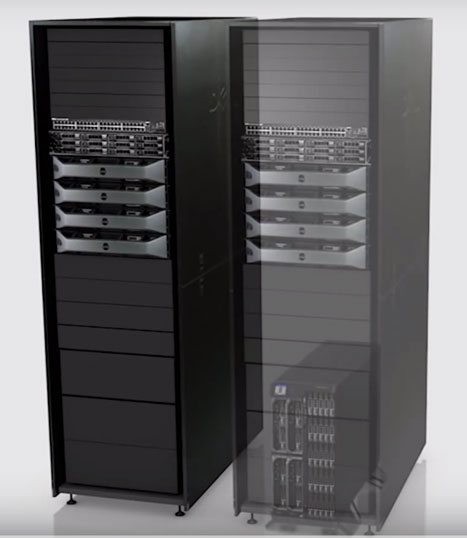
Increased Visibility
Modular IT infrastructure solutions afford much more control in a simple package compared to both traditional systems. With alternative solutions, you have to wrangle multiple different dashboards to get a holistic picture of how your systems are running. Modular systems compress these into one user friendly display that allows you to quickly manage your IT resources.
With a unified system comes the ability to more easily monitor systems. This is especially valuable for large chain businesses with many branches as they can quickly connect with each individual branch and get an accurate performance assessment.
All these benefits make it clear: modular IT infrastructure is built to solve the IT problems that these businesses face.
However, that doesn’t mean that all modular IT infrastructure systems are made equal. Dell’s PowerEdge VRTX is one of the best modular IT infrastructure systems on the market.
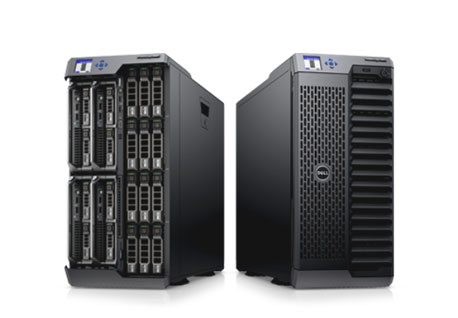
It delivers more performance in a tighter package than other products while consuming less power. It’s lower operating costs means that you’ll end up saving money and breaking even quickly.
The highly efficient system eliminates the need for extra cables by integrating wiring all systems into the chassis. The PowerEdge VRTX, with all of its power, is also whisper quiet, meaning you won’t suffer from a noisy server in your small office.
Everything runs in one console, so you can get the information you need right away with a minimum of fuss. The super compact system takes the functionality of a large tower and fits it into a chassis that can easily fit under a desk.
Dell’s PowerEdge VRTX is a powerful solution that empowers small businesses and branches of larger businesses with the tools they need to succeed.



